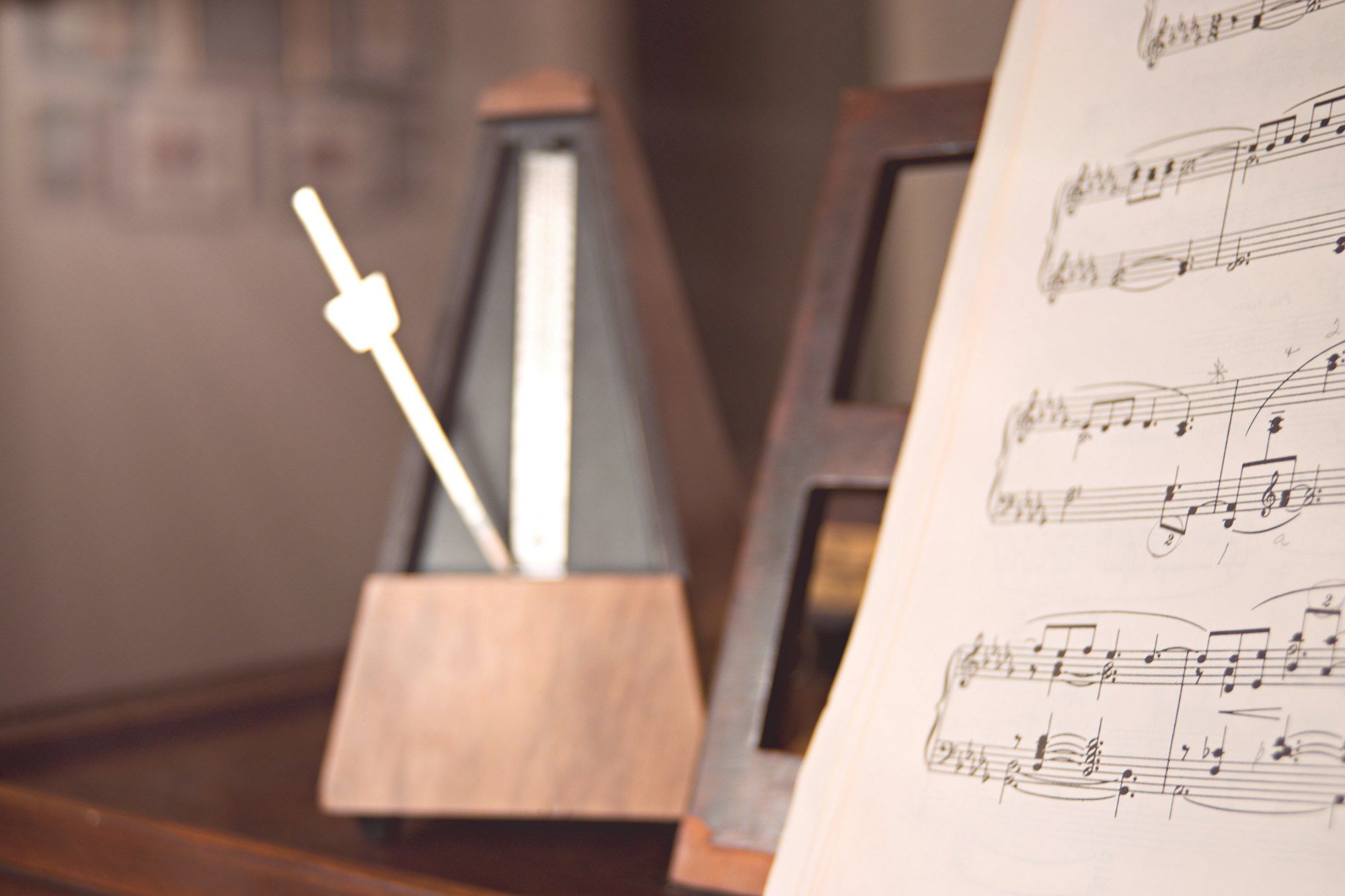If you’re a musician or even just familiar with music in general, then you’ve probably heard of a metronome.
These handy time-keeping devices are a core piece of equipment that every musician needs, and are incredibly useful for all sorts of reasons.

But what exactly are metronomes, and how do they work? Don’t worry, because we’ve got all the answers you need right here!
In this handy guide, we’ll take you through all you need to know about metronomes – from what they actually are to how they work, along with why they’re so useful in the first place.
So let’s jump right in and get started, shall we?
So What Exactly Is A Metronome?
First thing first – what actually is a metronome, exactly? Metronomes are devices that are used in music to help keep time.
They produce a tick every beat and keep a perfectly consistent time.
They look like a tall wooden pyramid, with one face marked with several timings and a pendulum that swings evenly from side to side to mark the tempo.
While they were originally only used for the piano, metronomes are now a popular and useful item that every musician needs in their arsenal.
They are a simple but effective way to measure your timing while playing, and are handy for everything from practicing to recording your music.
Metronomes can be adjusted to produce a range of various tempos and time signatures depending on the needs of the user.
This makes them an exceptionally useful tool for keeping time in music and helping multiple musicians stay consistent with each other.
This makes metronomes especially handy for music practice, where they are a great aid for learning a new piece of music’s proper timings – again, this is even more useful for group sessions!
Keeping time while you’re playing music is incredibly important, which makes metronomes a crucial piece of kit for any musician!
How Do Metronomes Work?
Okay, so now that we’ve covered what metronomes are, let’s take a look at how they work!
As we mentioned before, a metronome uses a pendulum to dictate the tempo it’s going at.
This pendulum swings back and forth at a steady rhythm, creating a visual accompaniment for the ticking noise.
Different types of metronomes function differently too; for example, a digital metronome is programmed to produce a tick electronically, while most physical metronomes use a combination of gravity and weights.
Traditional metronomes are wound up using a clockwork mechanism, which sets the pendulum swinging.
A pair of weights (one weight on the bottom of the pendulum and an adjustable weight on the visible part) control the rhythm of the pendulum and can be adjusted to alter the bpm.
As the pendulum swings, it slowly rotates a gear.
With each swing, the teeth of the gear move and hit a cam piece – this creates the ticking noise that metronomes are famous for!
While it might seem like a metronome will continue to run forever, they need a power source to keep ticking whether that be batteries, winding it back up, or giving it an initial swing.
If they aren’t given a power source, your metronome will eventually slow down and stop.
Can You Change The Tempo Of A Metronome?

One of the handiest features of a metronome is the ability to adjust its swing and tick for almost any bpm you need.
On top of making it so you don’t need a different metronome any time you’re playing in a different time signature of tempo, this is also an incredibly quick and easy thing to do!
To change the tempo on a metronome, you need to adjust where the weight lies on the pendulum.
The lower down on the pendulum (towards the bass of the metronome) the weight is, the faster it will go; the opposite is true when you move the weight to the top.
Don’t worry about trying to play it by ear, though!
Metronomes will have numbers listed down the face with the pendulum, indicating the time signature and tempo it will swing at.
Choose the time you need, and align the weight with it. Adjusting an electronic or digital metronome is even easier.
Most of these metronomes have a dedicated tempo setting that lets you choose the exact bpm you want your metronome to run at.
Being able to change the speed of your metronome at the push of a button is really handy, especially if your metronome is on your phone or another small device that can easily be carried around.
Why Metronomes Are So Useful?
As we’ve mentioned already, metronomes are handy for a variety of reasons.
The biggest use for a metronome is, of course, keeping time while you play; this makes it great for practicing music, particularly when playing as a group where everyone’s timings rely on each other for a coherent sound.
Their consistent rhythm, combined with their adjustable tempo, make them especially useful when learning a new song.
You can slow down the temp while you’re learning the notes, then gradually speed it up to its regular bpm when you’re comfortable playing the notes.
While their rhythmic ticking is one of the most important aspects of a metronome, there are other ways they can be useful.
On top of making it easier to practice, metronomes are also handy while recording music.
Having all the different parts of the music played at a consistent, even tempo and time signature makes it much easier to construct a fluid, well-made song.
Final Thoughts
Metronomes are incredibly handy devices that every musician needs to have.
They’re useful for a variety of different reasons, from helping you learn a new piece to keeping a group of musicians organized.
Whether you’re using a traditional mechanical metronome or a handy digital one on your phone, you can guarantee that you’ll get plenty of use out of your metronome.
So now you know a bit more about these handy devices, give them a try while you’re playing – you’re sure to see some great results!








Member discussion